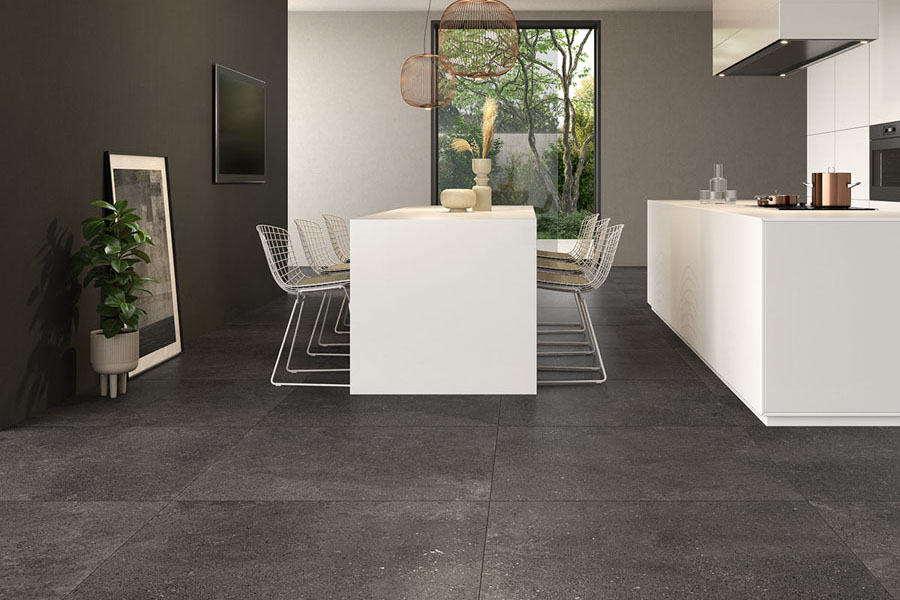As the global focus on sustainability intensifies, architects and specifiers are increasingly tasked with designing spaces that not only inspire but also minimise environmental impact. One of the most impactful ways to achieve this is through the selection of building materials, and tiles are no exception. In recent years, sustainable tile trends have emerged as a cornerstone of eco-friendly design, offering innovative solutions that reduce carbon footprints while maintaining aesthetic and functional excellence.
At Waxman Architectural, we understand the critical role architects play in shaping a sustainable future. This blog explores the latest trends in sustainable tiles, highlighting how they are helping architects meet environmental goals without compromising on design integrity.
The Urgency of Sustainable Design in Architecture
The construction industry is responsible for nearly 40% of global carbon emissions, with building materials accounting for a significant portion of this footprint. As climate change accelerates, architects and specifiers are under increasing pressure to adopt sustainable practices. Tiles, as a fundamental element of interior and exterior design, present a unique opportunity to make a meaningful difference.
Sustainable tiles are designed with a focus on reducing environmental impact at every stage of their lifecycle—from raw material extraction and manufacturing to installation and end-of-life disposal. By incorporating these materials into their projects, architects can contribute to a circular economy and align with global sustainability targets, such as the UN’s Sustainable Development Goals (SDGs).
Key Sustainable Tile Trends in 2024
-
Recycled and Upcycled Materials
One of the most significant trends in sustainable tile design is the use of recycled and upcycled materials. Manufacturers are now producing tiles made from post-consumer waste, such as glass, ceramics, and even industrial by-products. For example, tiles made from recycled glass not only reduce landfill waste but also require less energy to produce compared to virgin materials.
Architects are increasingly specifying these tiles for projects where sustainability is a priority. Upcycled tiles, which repurpose materials from demolished buildings or industrial waste, are also gaining traction for their unique aesthetic and environmental benefits.
-
Low-Carbon Manufacturing Processes
The tile industry is embracing low-carbon manufacturing techniques to reduce greenhouse gas emissions. Innovations such as energy-efficient kilns, renewable energy sources, and water recycling systems are becoming standard practices for leading manufacturers.
Additionally, some companies are adopting carbon capture technologies to offset emissions during production. By selecting tiles from manufacturers committed to low-carbon processes, architects can significantly reduce the embodied carbon of their projects.
-
Durable and Long-Lasting Designs
Sustainability isn’t just about the materials—it’s also about longevity. Durable tiles that withstand wear and tear over time reduce the need for frequent replacements, thereby minimizing waste. Architects are increasingly opting for high-quality, timeless designs that remain functional and visually appealing for decades.
-
Natural and Biodegradable Materials
Tiles made from natural materials, such as clay, terracotta, and stone, are inherently sustainable due to their minimal processing requirements. These materials are biodegradable and non-toxic, making them an excellent choice for eco-conscious projects.
Additionally, bio-based tiles, which incorporate organic materials like cork, bamboo, or even mycelium (mushroom roots), are emerging as a cutting-edge alternative. These tiles offer a unique texture and aesthetic while being fully compostable at the end of their lifecycle.
-
Local Sourcing and Production
Reducing transportation emissions is a critical aspect of sustainable design. By sourcing tiles locally, architects can significantly lower the carbon footprint associated with shipping and logistics. Many manufacturers are now offering regionally produced tiles, ensuring that sustainability extends beyond the product itself to the entire supply chain.
-
Innovative Finishes and Coatings
Advances in tile coatings have led to the development of eco-friendly finishes that enhance durability and functionality without harmful chemicals. For instance, photocatalytic tiles coated with titanium dioxide can break down air pollutants, improving indoor air quality. Similarly, anti-microbial coatings reduce the need for harsh cleaning agents, contributing to a healthier environment.
How Architects Can Specify Sustainable Tiles
Specifying sustainable tiles requires a holistic approach that considers environmental impact, performance, and aesthetics. Here are some key steps architects can take:
-
Evaluate Environmental Certifications
Look for tiles with recognised certifications, such as Cradle to Cradle (C2C), Environmental Product Declarations (EPDs), or LEED compliance. These certifications provide transparency about a product’s environmental impact and sustainability credentials.
-
Assess Lifecycle Impacts
Consider the entire lifecycle of the tile, from raw material extraction to end-of-life disposal. Tools like Life Cycle Assessment (LCA) can help architects make informed decisions based on comprehensive environmental data.
-
Collaborate with Manufacturers
Engage with tile manufacturers to understand their sustainability practices and innovations. Many companies, including Waxman Architectural, are committed to transparency and can provide detailed information about their products’ environmental benefits.
-
Prioritise Timeless Design
Choose tiles with timeless designs that won’t go out of style, reducing the likelihood of premature replacement. Neutral colours, classic patterns, and versatile textures are excellent options for achieving longevity in design.
The Role of Waxman Architectural in Sustainable Tile Solutions
At Waxman Architectural, we are dedicated to supporting architects and specifiers in their pursuit of sustainable design. Our curated selection of eco-friendly tiles combines innovation, quality, and environmental responsibility. Whether you’re looking for recycled materials, low-carbon options, or natural finishes, we offer solutions that align with your sustainability goals.
Our team of experts is here to guide you through the specification process, ensuring that your projects not only meet but exceed environmental standards. By partnering with Waxman Architectural, you can confidently create spaces that are as sustainable as they are stunning.
Conclusion: Leading the Way in Sustainable Design
As architects and specifiers, you have the power to drive meaningful change in the built environment. By embracing sustainable tile trends, you can reduce carbon footprints, promote circular economies, and create spaces that inspire future generations.
The future of architecture lies in sustainability, and tiles are a vital piece of the puzzle. At Waxman Architectural, we’re proud to be your partner in this journey, offering innovative solutions that combine environmental responsibility with exceptional design.
Together, let’s build a greener, more sustainable world—one tile at a time.

